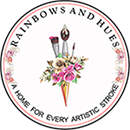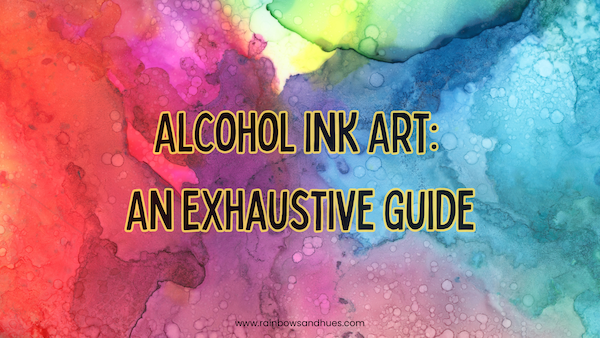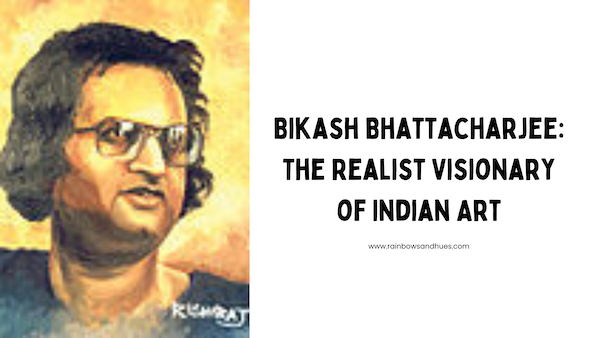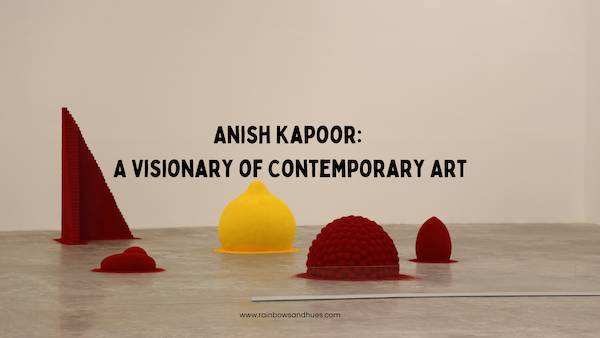Alcohol ink art is a vibrant and fluid art form that has gained immense popularity recently. Its unique properties and the freedom it offers artists make it a favourite medium for abstract and intricate designs. This detailed guide will cover everything you need to know about alcohol ink art, from the basics and necessary materials to techniques, tips, and the cultural significance of this art form.
Also Read: The Evolution of Pens: A Comprehensive History
What is Alcohol Ink?
Alcohol ink is a highly pigmented, fast-drying medium made of dye and alcohol. Unlike water-based inks, alcohol inks do not react with water, making them ideal for use on non-porous surfaces. The alcohol in the ink allows it to flow smoothly, creating vibrant, transparent layers that can be manipulated in various ways to achieve different effects.
History of Alcohol Ink
Alcohol ink is a relatively modern art medium, having gained popularity in the late 20th and early 21st centuries. Its development and rise to prominence are tied to advancements in dye and ink technology, as well as the growing interest in new and innovative art forms. Although alcohol ink itself doesn’t have a long history, its origins can be traced back to earlier developments in ink and dye making, as well as the evolution of artistic practices.
BUY ALCOHOL INKS HERE
Early Development of Inks
The history of ink dates back thousands of years, with the earliest inks being used by ancient civilizations such as the Egyptians, Chinese, and Greeks. These early inks were typically made from natural ingredients like plant dyes, soot, and animal byproducts. The evolution of ink-making techniques over centuries eventually led to the creation of more sophisticated and varied types of ink, including those used for printing, writing, and art.
The Emergence of Dye-Based Inks
In the 19th century, the invention of synthetic dyes revolutionized the production of inks. These synthetic dyes allowed for the creation of vibrant, consistent colours that were more durable and easier to produce than traditional natural dyes. This development laid the groundwork for the later creation of alcohol-based inks, which rely on synthetic dyes for their vivid hues.
The Birth of Alcohol Inks
Alcohol inks as a distinct medium began to emerge in the late 20th century, primarily in the United States and other Western countries. Artists and crafters were experimenting with various types of inks, including those dissolved in alcohol, to create new and exciting effects. The use of alcohol as a solvent allowed for fast drying times and unique blending properties, making alcohol inks particularly appealing for creating abstract and fluid artworks.
One of the key factors in the rise of alcohol inks was the availability of non-porous surfaces like Yupo paper and ceramic tiles. These surfaces allowed the alcohol inks to flow and blend without being absorbed, leading to the distinctive, vibrant effects that have become synonymous with this medium.
Also Read: A Glimpse Into Rising Popularity of Resin Rakhi in India.
Commercialization and Popularity
The commercialization of alcohol inks in the late 1990s and early 2000s played a significant role in their popularity. Brands began producing alcohol inks in a variety of colours, making them accessible to a wider audience. These inks were marketed not only to professional artists but also to crafters and hobbyists, which contributed to their widespread adoption.
The rise of social media platforms like Instagram and Pinterest in the 2010s further boosted the popularity of alcohol ink art. Artists began sharing their work online, showcasing the unique and beautiful effects that could be achieved with alcohol inks. This led to a surge in interest and experimentation, with more and more people trying their hand at this medium.
Cultural Impact and Modern Applications
Today, alcohol inks are used in a variety of creative contexts, from fine art to home décor and DIY crafts. They have become a favourite medium for artists who enjoy the unpredictability and fluidity of the ink, as well as the vibrant, bold colours that can be achieved. Alcohol ink art is often featured in galleries, art shows, and online platforms, reflecting its growing acceptance and appreciation in the contemporary art world.
In addition to traditional art, alcohol inks have found applications in other areas such as jewellery making, textile design, and even industrial design. The versatility and ease of use of alcohol inks continue to inspire new and innovative applications, ensuring that this medium will remain relevant and exciting for years to come.
BUY ALCOHOL BLENDING SOLUTION HERE
Materials Needed for Alcohol Ink Art
Before you start creating alcohol ink art, gather the following materials:
- Alcohol Inks: Available in a wide range of colours.
- Isopropyl Alcohol: Usually 91% or higher, used to dilute and manipulate the inks.
- Blending Solution: A mixture of alcohol and other solvents designed to lighten and blend the inks.
- Non-Porous Surfaces: Yupo paper, ceramic tiles, glass, or metal. These surfaces do not absorb the ink, allowing it to flow and blend smoothly.
- Applicators: Brushes, felt pads, or cotton swabs for applying and manipulating the ink.
- Protective Gear: Gloves, apron, and a well-ventilated workspace. Alcohol inks have strong fumes.
- Sealant: UV-resistant varnish or resin to protect the finished artwork.
Basic Techniques for Alcohol Ink Art
1. Dropping and Blending
Start by dropping alcohol ink directly onto the non-porous surface. Add isopropyl alcohol or blending solution to dilute the ink and create different shades. Use a straw or air blower to move the ink around, blending colours and creating abstract patterns.
2. Layering
Allow each layer of ink to dry before adding the next. This technique creates depth and complexity in your artwork. You can use a brush or applicator to control the placement and movement of each layer.
3. Alcohol Lift Technique
This technique involves lifting ink from the surface to create intricate designs. Apply ink to the surface, let it dry, and then use a clean cloth or cotton swab dipped in isopropyl alcohol to lift the ink away. This method is excellent for adding highlights and details.
4. Masking
Use masking fluid or stencils to protect certain areas of your surface from ink. Apply the ink around the masked area, and once it’s dry, remove the masking fluid to reveal the untouched surface. This technique is perfect for creating sharp edges and defined shapes.
Also Read: Back to School Stationery Needs: A Comprehensive Guide
Advanced Techniques and Tips
1. Controlled Pouring
Pouring inks in a controlled manner allows you to create specific shapes and patterns. Tilt the surface to guide the ink flow. Combine different colours for more vibrant and complex designs.
2. Using Heat Tools
Heat tools like embossing heat guns can speed up the drying process and manipulate the ink. Apply heat to move the ink around and create interesting textures and effects.
3. Combining with Other Mediums
Alcohol inks can be combined with other mediums like acrylics, resin, or markers to add more dimension to your artwork. Experiment with different combinations to find unique styles and effects.
Cultural Significance and Popularity
This art has become a popular medium due to its versatility and the unique effects it can produce. Artists appreciate the freedom it offers, allowing for spontaneous and expressive creations. This art form has been embraced in various cultures and communities, reflecting its universal appeal.
Also Read: A Kaleidoscope Of Mirror Arts Across The World
Contemporary Art Scene
In the contemporary art scene, this ink art is celebrated for its vibrant colours and fluid forms. It is often featured in galleries and art shows, highlighting the innovative techniques and creativity of artists working with this medium.
DIY and Home Décor
This art has also found a place in DIY projects and home décor. Many hobbyists and craft enthusiasts use these inks to create custom pieces, such as coasters, wall art, and decorative tiles. The ease of use and the stunning results make it a popular choice for personalizing living spaces.
Conclusion
Alcohol ink art is a dynamic and exciting medium that offers endless possibilities for creativity. From basic techniques like dropping and blending to advanced methods such as controlled pouring and using heat tools, artists can explore a wide range of effects and styles. With the right materials and a bit of experimentation, anyone can create stunning artwork. This art form’s growing popularity and cultural significance underscores its appeal and the joy it brings to both artists and audiences alike. Embrace the vibrant world of this art and discover the beauty of fluid, colourful expression.
Also Read: Lippan Art: A Unique Blend of Tradition and Craftsmanship
***
Hop over to www.rainbowsandhues.com to explore exciting offers on arts & craft supplies on our website!
Follow @rainbowsandhues on Instagram to get regular information on new products and deals!




